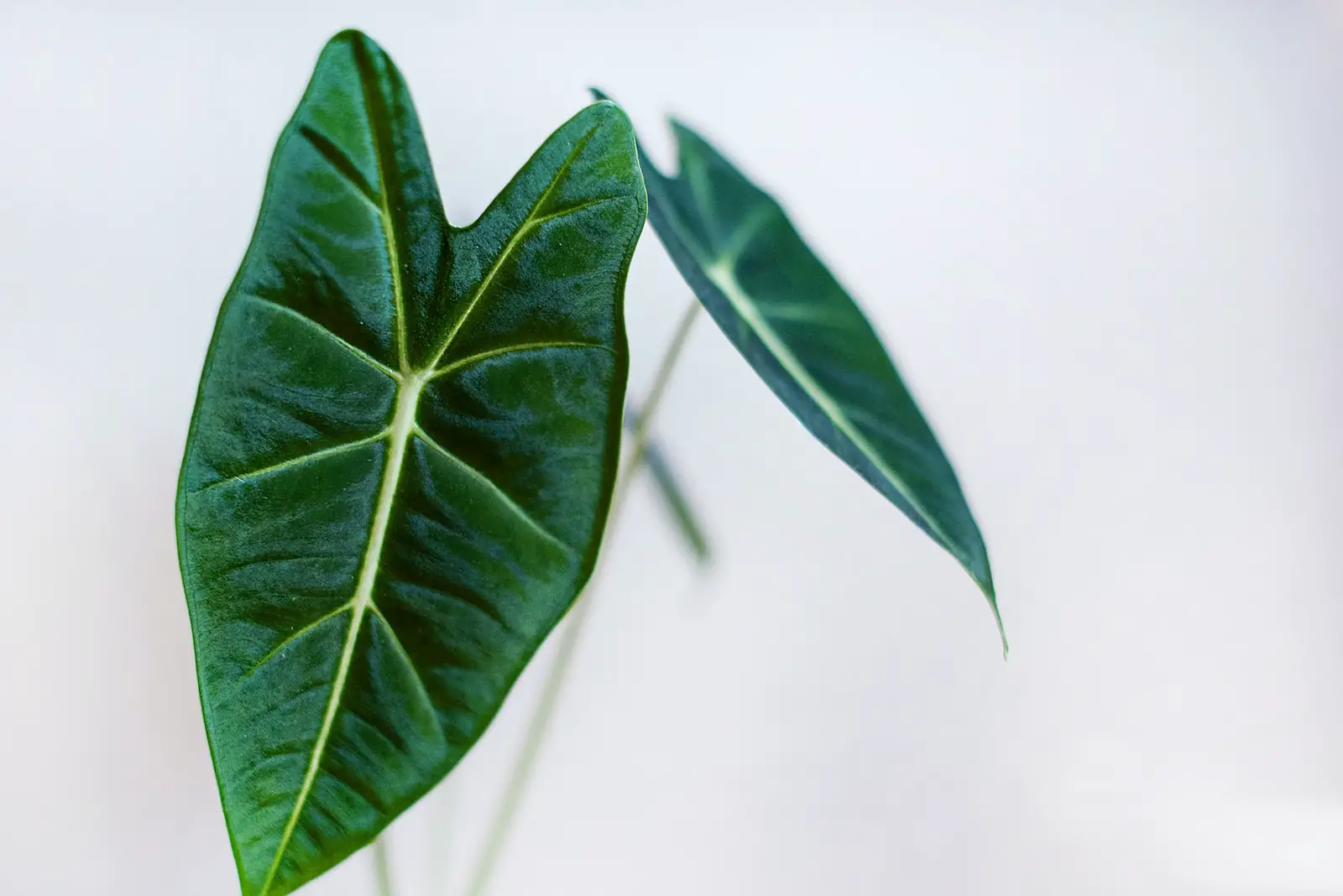Alocasia, commonly known as Elephant Ears, is a genus of broad-leaved perennials native to tropical and subtropical Asia and Eastern Australia. Their large, dramatic foliage is shaped like an elephant’s ear, giving the plant its well-known common name. Available in over 80 species, Alocasia’s unique appearance has made it a popular ornamental houseplant.
Alocasia’s large, arrow-shaped leaves are often beautifully colored and patterned, which contributes to its ornamental appeal. The glossy texture and vibrant shades of green, along with occasional silver or white veining, make it a favorite amongst gardeners and interior designers. The plant is not only admired for its beauty but also its symbol of good luck in many cultures.
In addition to their aesthetic appeal, Alocasia plants are known for their rapid growth under the right conditions. As tropical natives, they thrive in humid environments with plenty of indirect sunlight. Though their care requirements might seem demanding to some gardeners, understanding the plant’s native habitat and replicating those conditions can lead to successful cultivation. Let’s explore the specific aspects of caring for this striking plant.
| Attribute | Details |
|---|---|
| Common Names | Elephant Ears, African Mask Plant |
| Botanical Name | Alocasia spp. |
| Family | Araceae |
| Plant Type | Perennial |
| Mature Size | 2-15 feet tall, depending on species |
| Sun Exposure | Part shade, filtered sunlight |
| Soil Type | Rich, well-draining, slightly acidic soil |
| Hardiness Zones | 9-11 |
| Native Area | Tropical and subtropical Asia, Eastern Australia |
Alocasia Care
Caring for Alocasia requires an understanding of the plant’s tropical origins. These plants crave high humidity, consistent moisture, and indirect sunlight. They are not particularly drought-tolerant and need to be watered regularly. However, they are susceptible to root rot if overwatered or if the soil doesn’t drain properly.
Alocasia plants also require a stable environment without drastic temperature changes. Placing them near a north or east-facing window and away from heating or cooling vents can create an ideal microclimate. Their exotic appearance and responsiveness to good care make them a rewarding plant for those willing to meet their specific needs.
Light Requirement for Alocasia
Alocasia prefers bright, indirect sunlight. Direct sunlight can scorch the leaves, while too little light can cause the plant to become leggy. Filtered sunlight through a curtain or placing the plant near a north or east-facing window usually provides the right amount of light.
Soil Requirements for Alocasia
A well-draining, slightly acidic soil rich in organic matter is ideal for Alocasia. A mixture of potting soil with some perlite and peat moss can create the right texture and pH level. Ensuring that the soil retains moisture but does not become soggy is key to healthy growth.
Water Requirements for Alocasia
Alocasia requires consistent moisture but is sensitive to overwatering. Watering should be done when the top inch of soil feels dry. In the growing season, this may be as often as once a week, while in winter, it can be reduced. Avoid letting the soil dry out completely, as this can stress the plant.
Temperature and Humidity
Alocasia thrives in temperatures between 65-80°F and requires high humidity. In drier environments, a humidifier, pebble tray, or frequent misting can help maintain the humidity level. Avoid placing the plant near heating or cooling vents that can cause temperature fluctuations.
Fertilizer
Feed Alocasia with a balanced liquid fertilizer diluted to half strength every 2-4 weeks during the growing season. Reduce feeding during the dormant winter months. An overabundance of fertilizer can lead to salt buildup, so occasional flushing of the soil is recommended.
Pruning Alocasia
Pruning Alocasia is typically done to remove dead or yellowing leaves. Regular trimming helps the plant focus its energy on new growth and maintains an attractive appearance. Using clean, sharp scissors or pruning shears will make the task easier.
Propagating Alocasia
Alocasia can be propagated through division. In the spring or early summer, carefully separate the rhizomes or tubers, ensuring that each section has roots attached. Planting them in similar soil and providing the same care as the parent plant will lead to new growth.
How To Grow Alocasia From Seed
Growing Alocasia from seed is a rare and complex process typically left to professional growers. Seeds need to be fresh and are sown in a well-draining medium, kept warm, and consistently moist until germination. Patience is required, as it may take several months for seedlings to appear.
Common Pests & Plant Diseases
Alocasia may attract pests like spider mites, aphids, and mealybugs. Regular inspections and cleaning with insecticidal soap can prevent infestations. Overwatering and poor air circulation can lead to fungal diseases like root rot.
Common Problems With Alocasia
Drooping Leaves
Drooping leaves may indicate underwatering or overwatering. Check the soil’s moisture and adjust the watering routine accordingly.
Yellowing Leaves
Yellowing leaves can be a sign of overwatering or insufficient light. Evaluate the plant’s placement and soil moisture to determine the issue.
Brown Leaf Edges
Brown leaf edges often suggest a lack of humidity. Increasing humidity through misting or using a humidifier can alleviate this problem.
Pro Tips
- Keep Alocasia out of direct sunlight to avoid scorching the leaves.
- Monitor soil moisture closely, as both overwatering and underwatering can harm the plant.
- Provide consistent humidity, especially during dry winter months.
- Be patient with Alocasia’s growth, as it may go dormant in winter but return with vigor in spring.
- Choose the right Alocasia species to match your space, as some can grow quite large.

